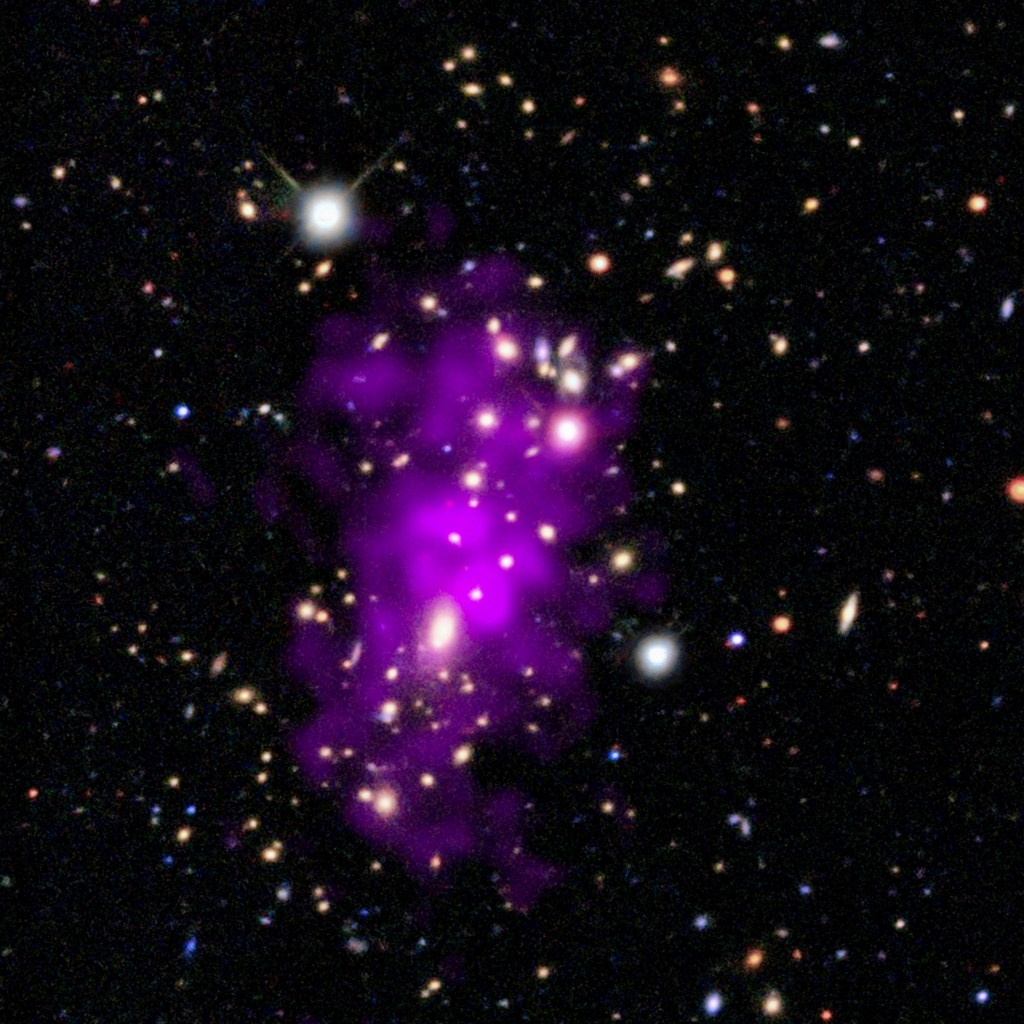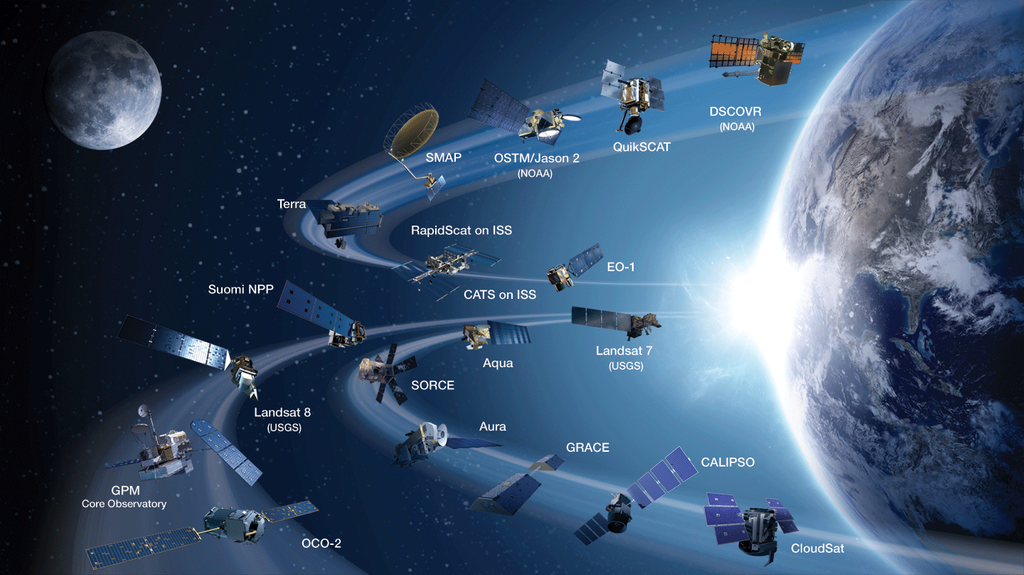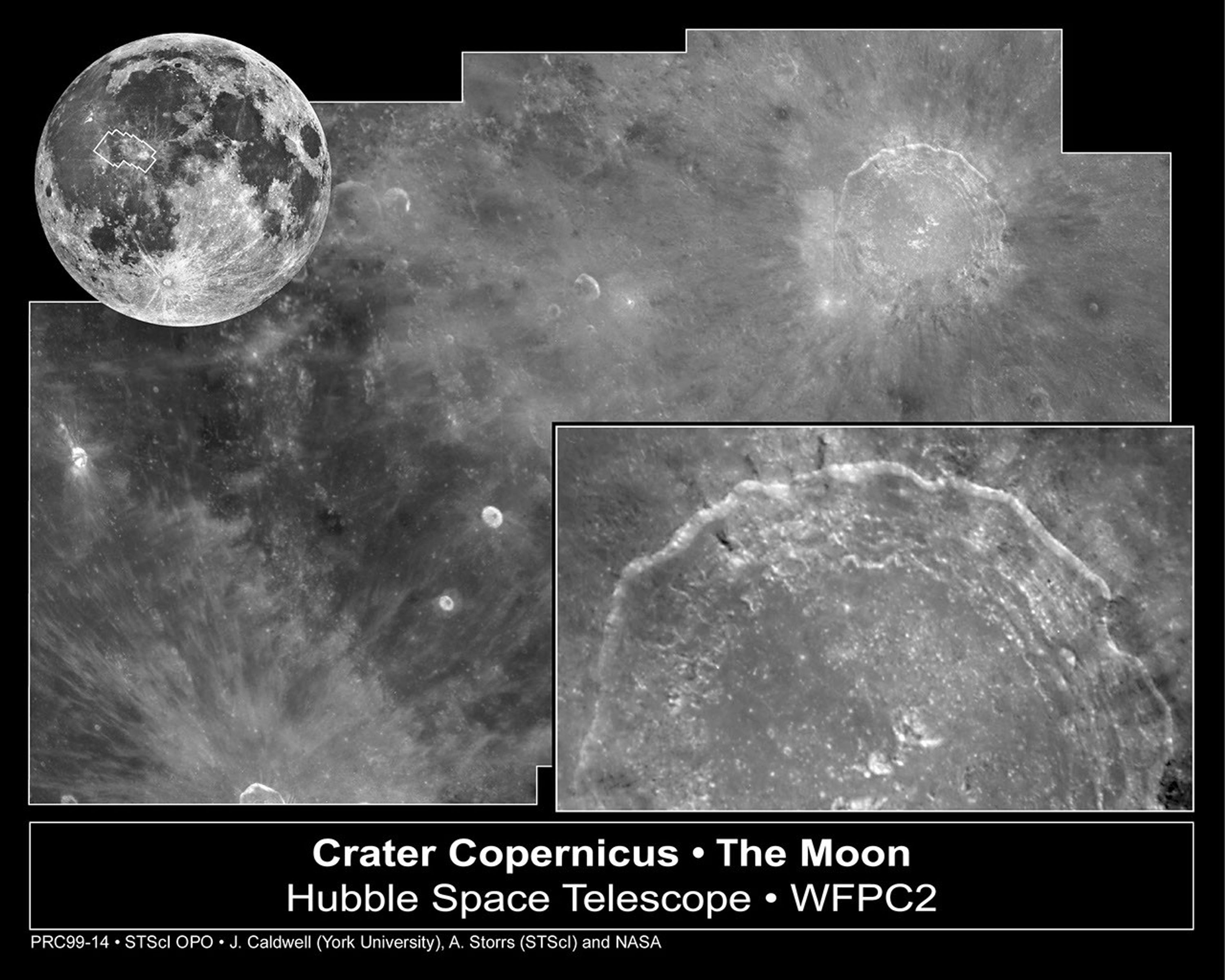1 min read
Crater Copernicus on Earth’s Moon

Hubble Wide Field and Planetary Camera 2 mosaic of crater Copernicus. Hubble's crisp bird's-eye view clearly shows the ray pattern of bright dust ejected out of the crater over 1 billion years ago. Hubble can resolve features as small as 600 feet across in the terraced walls of the crater, and the hummock-like blanket of material blasted out by the meteor impact.
- Object NameObject NameA name or catalog number that astronomers use to identify an astronomical object.Moon
- Release DateApril 16, 1999
- Science ReleaseHubble Shoots the Moon
- Credit
Related Images & Videos
Share
Details
Last Updated
Aug 17, 2025
Contact
Media
Claire Andreoli
NASA’s Goddard Space Flight Center
Greenbelt, Maryland
claire.andreoli@nasa.gov

































